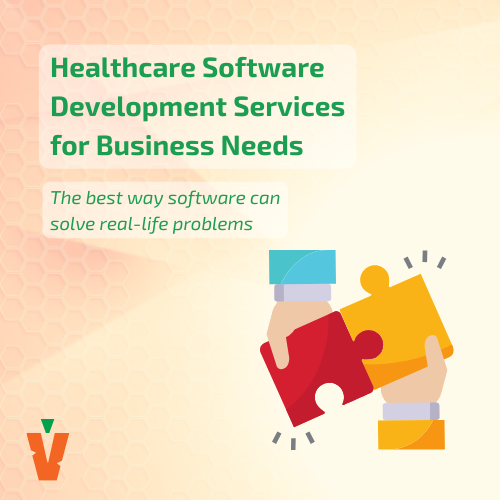Health inequalities run rampant in the US — but technology could help make healthcare fairer to everybody. Digital health equity means ensuring that everybody gets equal access and benefit from digital health services, no matter their location, socio-economic status, or any other social factor.
While improving health IT could bridge some gaps, the situation isn’t as simple as ‘we should build more health tech.’ If we don’t check for biases, we could worsen inequality by building software that only helps more privileged populations. From limited access to cultural barriers, there’s a lot to consider outside technology alone.
Still, as healthcare software developers, we can turn the tide in either direction. Why not make it a force for fairness? Keep reading to learn why and how to build justice into software.
But first, why is health equity important?
Why Is Health Equity Important in Healthcare?
Healthcare equity is important in healthcare because it ensures that everyone, regardless of background or circumstances, has fair access to care. Without it, imbalanced outcomes will persist, worsen, and undermine the well-being of our citizens and society. Technology can be the great equalizer in this regard, from supporting programs like the Aventi 340B program to building tools that stop quality care from seeming out of reach.
This idea is no news to most US citizens, and the Biden administration has made efforts to improve the broken healthcare system.
As a result, healthcare equity has become a strategic priority in the US. The Office for the National Coordinator for Health Information Technology (ONC) released a draft of its objectives for the next five years, and equity is a focal point. You can read more about these objectives, and how they pertain to healthcare software development, in our recent overview of the topic.
How does the ONC plan to achieve this goal? Among other strategies, the government wants to promote equity by encouraging better health tech design. It’ll promote solutions that are safe, user-centric, and suitable for all citizens.
How Technology Can Improve Healthcare Equity
Digital health equity requires us to recognize that, as we enable access to health tech to more people, we must represent all demographics respectfully in our solutions. Otherwise, we’ll end up with biased apps and platforms that only improves patient outcomes for a selected part of our population. For example, recent issues with a dermatology app not working on darker skin tones show how tech can miss the mark.
Besides incorporating broader data into our software, we must remember the ways people use technology depend on their wealth. For instance, multiple users may share a device, so there must be privacy features to keep them protected. Providers and patients with limited funds often need tools that work on low-data internet browsers.
Many people didn’t grow up with technology and develop digital literacy. Think of population on Medicaid, which is 18% all US citizens — they have to reapply annually on poorly-run administrative portals, or they lose it. State or even federal solutions that automatically renew insurance policies would increase coverage rates while reducing pressure on each patient. This scenario already happens in Michigan, and it yields positive outcomes.
See the graph below on how Michigan pairing with NGOs to resolve this problem has yielded positive results.

The scenarios we shared are only three examples of the social determinants of health — non-medical factors that influence health outcomes, which we must consider while building equitable healthcare software. To learn more about them, explore CDC’s SDoH resources.
For now, let’s focus on (some of) the social determinants of health that technology can improve:
- Socioeconomics. Social and economic status affects people’s ability to afford medical care. Low-cost or free resources, like telemedicine apps and online education platforms, can make healthcare more accessible to low-income users.
- Minority status. Medical education tends to revolve around the needs of white men, which creates biases and disparities in treatment. If we train decision-support tools on diverse datasets, though, they could cater to the needs of more diverse populations.
- Geography. Physical locations limit access to care, especially in rural or remote areas. Telehealth services, remote monitoring devices, and mobile health clinics can support these communities, offering good-quality care that doesn’t require hours of expensive travel.
- Health literacy. Medical information and instructions are tricky even for the well-educated, and even more so for people without an academic background. Technology can improve understanding with easy educational materials, interactive tools, and simple health-tracking apps.
- Insurance coverage. Insurance affects access to healthcare services and treatment options. Technology can support decision-making by helping people navigate insurance plans, understand coverage options, and compare costs. As we mentioned above, some aspects of coverage could also be automated, reducing the rates of uninsured patients.
- Behavioral patterns. Individual habits, like diet and exercise, impact health outcomes. Personalized health apps could track activity levels, offer nutrition guidance, and connect users with support networks, getting them to make better decisions and improve their wellness.
This topic is comprehensive and includes criteria many of us don’t think about while building software. Check this article for the Yearbook of Medical Informatics and the healthcare equity resources on the ONC website to learn more about it.
Building Equitable Healthcare Software: 5 Core Principles
Innovators in digital health equity can tackle many issues by keeping these five principles at the core of their approach.
1. Accessibility
As a company leader striving toward digital health equity, you must make accessibility a core feature of your healthcare software. This includes promoting it in public and emphasizing its importance to your employees. Develop guidelines for development teams to create features, design software, and test products on people with various needs.

Geography is another aspect of accessibility. Language, internet connectivity, and device compatibility could be barriers to access, especially in remote communities that aren’t as tech-savvy. The lower-requirement software you develop, the better it’ll be for all people.
How it looks in practice: Consider Teladoc Health, a telehealth and telemedicine provider. It’s simple in design, multilingual, and user-friendly. Moreover, it offers a broad range of digital services, so individuals in remote areas can get physical, mental, and chronic healthcare without traveling to a facility.
2. Affordability
Develop efficient and cost-effective software, helping healthcare providers maximize their resources. Think of scalable solutions that grow with the organization, minimizing the upfront investment and maintenance costs.
To go further, offer flexible pricing models that accommodate varying budget constraints, like tiered subscription plans, pay-per-use options, or discounts for underserved communities.
How it looks in practice: OpenMRS is an open-source EMR platform for healthcare delivery in low-resource settings. It’s designed as lightweight and adaptable, letting providers customize it without additional expenses. Various payment models are available to supply everybody with quality digital healthcare.
3. Cultural Sensitivity
Incorporate inclusive design practices that accommodate a range of cultural preferences and needs. They include customizable features, language localization, and culturally relevant tips (such as nutrition guidance suitable to different religions).
Since most software companies have homogenous employee structures, it also pays to invest in diversity training. Equip team members with the skills to interact respectfully with users from diverse backgrounds.
How it looks in practice: Cityblock Health is a healthcare company that provides personalized care for underserved communities. Co-designing with community organizations lets them meet the needs of diverse populations. The company has a Diversity and Inclusion rating of 4.3/5 on Glassdoor.
4. Education
Users and communities may hesitate to adopt modern medical tools because they’re too complicated. We can (and should) make our platforms educational instead of assuming knowledge to boost digital health equity.
Offer personalized learning paths, using algorithms to recommend educational resources based on users’ health conditions or job roles. Present information in digestible formats: infographics, videos, or interactive tutorials.
If creating tools for providers, include training modules and resources for healthcare professionals to support adoption. Offer accredited courses, webinars, and case studies, increasing the ability of hospital staff to deliver top-quality care in all communities.
How it looks in practice: Figure 1 is a health tech platform that educates medical workers worldwide. It prioritizes education and contributes to digital health equity.
5. Community Engagement
Develop a directory of local clinics, support groups, social services, and wellness programs. Empower hospitals to connect patients with community resources to address their needs beyond clinical settings.
Regarding research, you can provide tools for community health assessments. Use data collection tools to help hospitals gather data on local health disparities, social determinants of health, and unmet healthcare needs. Of course, everything must follow strict HIPAA protocols for protecting patient health information (check out NIST's latest resource on HIPAA implementation to make it easier).
How it looks in practice: SameSky Health is a culturally sensitive healthcare software platform aiming to improve care for underserved communities. Their CultureGuide reaches members through a cultural lens, curating their services to close care gaps.
Digital Health Equity & Better Care for All
Incorporating the principles of digital health equity into healthcare software has double benefits. For one, it lets you meet current and incoming regulatory requirements. It also helps us foster a fairer, more inclusive ecosystem, narrowing health disparities in the US.
Do you need support in navigating this landscape? Get guidance from our Business Analysts and lead the charge in building healthcare solutions that promote healthcare equity for all.




.png)